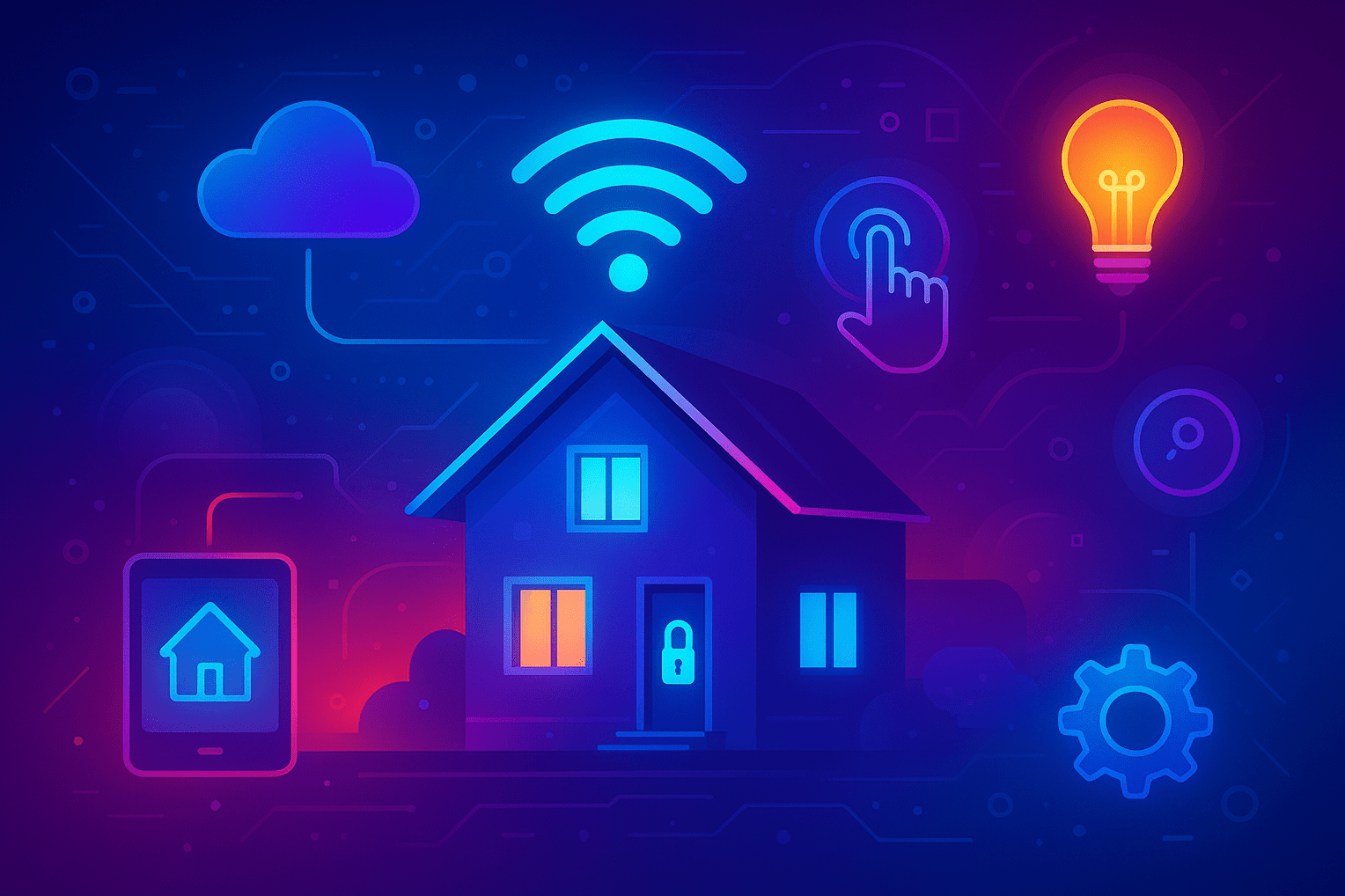21 October 2025
The Future of Smart Homes: Direction, Opportunities, and Challenges
Smart home technology has evolved from a simple gimmick into a foundation of modern digital living. Automatic lighting, phone-controlled door locks, and intelligent speakers have become common features in many households. Yet, the journey of smart homes is far from over—several key trends will shape how they function, are perceived, and are managed in the next 5–10 years.
1. From Standalone Devices to Integrated Ecosystems
Until now, many smart home devices have operated independently or within closed manufacturer ecosystems. Moving forward, the focus will shift toward interoperability—devices from different brands must work seamlessly together through open standards and intelligent gateways.
Users expect a coordinated experience—for example, a “coming home” scenario that simultaneously turns on the lights, adjusts the air conditioner, and opens the curtains without requiring complicated configurations.
2. Intelligence Closer to the User (Edge AI)
Instead of sending all data to the cloud, more processing will occur directly on the devices themselves through edge computing. The advantages include lower latency, stronger privacy, and continuous operation even when the internet connection is disrupted.
Edge AI enables cameras, sensors, and home hubs to make real-time decisions—recognizing movement patterns, distinguishing between family members and guests, or adjusting environments based on occupants’ habits.
3. Personalization and Prediction Through AI
Artificial Intelligence will enhance personalization. Smart systems will learn individual preferences: the preferred brightness for each room at specific times, morning music playlists, or energy-saving patterns when the house is empty.
Predictive maintenance will also become more common—devices like washing machines or air conditioners will provide early warnings before failures occur, minimizing repair costs and downtime.
4. Security and Privacy as Top Priorities
As the number of connected devices grows, so does the attack surface. Manufacturers will need to adopt a security-by-design approach—implementing end-to-end encryption, secure automatic firmware updates, and transparent access controls.
On the user side, demand will increase for solutions that process data locally or offer private storage options. Regulatory bodies are also expected to enforce minimum cybersecurity standards for consumer IoT devices.
5. Energy, Sustainability, and a Smarter Grid
Smart homes will play an integral role in a larger energy ecosystem. Solar panels, battery storage, and electric vehicles can be managed together to balance energy consumption and supply.
An intelligent home energy management system (HEMS) could delay EV charging during peak electricity rates, run washing machines when excess energy is available, or contribute to demand response programs for local utilities.
This sustainability focus not only reduces utility bills but also helps lower the household carbon footprint.
6. Health and Long-Term Care
Smart homes will increasingly support health and wellness. Sensors can track sleep patterns, simple vital signs, or changes in daily activity that may signal a need for assistance—particularly for elderly residents.
Integration with telehealth services enables relevant data to be securely shared with healthcare professionals. However, this evolution requires strict medical data privacy standards and clinical validation for certain applications.
7. More Natural Interfaces: Voice, Gestures, and AR
Voice control is already popular, but the future of smart home interfaces will be more diverse. Gesture recognition, augmented reality (AR) overlays on smart glasses, and visual dashboards that help users monitor home conditions will become common.
Interface design will focus on accessibility and simplicity, ensuring usability for all age groups.
8. Standardization, Regulation, and the Service Economy
To achieve mass adoption, clear technical standards and regulations will be essential—especially concerning interoperability, data security, and consumer data rights.
The business model will also evolve from one-time device sales to service-based models, such as subscriptions for managed security, predictive maintenance, or integrated multi-device packages.
9. Challenges That Must Be Overcome
Several key challenges remain:
Ecosystem fragmentation: Without strong standards, cross-brand integration remains difficult.
User trust: Data breaches or privacy violations could hinder adoption.
High initial costs and complexity: Comprehensive solutions are often expensive and require professional installation.
Infrastructure dependency: Reliable connectivity—especially broadband and 5G—is essential for many smart home features.
Building the Next Generation of Smart Homes
The next stage of smart homes isn’t just about adding more “smart” devices—it’s about creating an intelligent, secure, and sustainable ecosystem that truly understands and serves its occupants.
The combination of edge AI, interoperability, privacy focus, and integration with energy and healthcare systems will be the driving forces ahead.
For both users and service providers, the key lies in human-centered design—technology that feels helpful without sacrificing privacy or comfort.
Visit the official Telkom Wholesale Service Division website at mycarrier.telkom.co.id for more insightful updates on digital innovation and smart living.
Is this information helpful?
